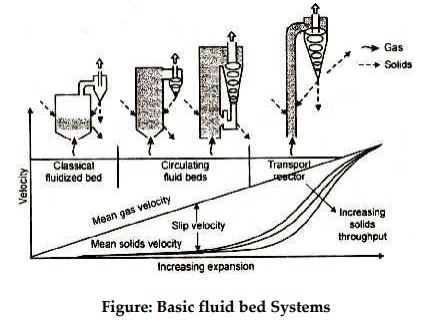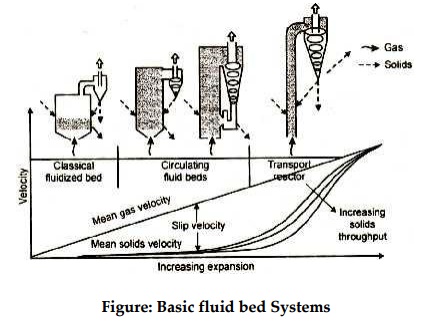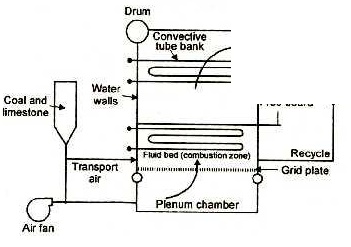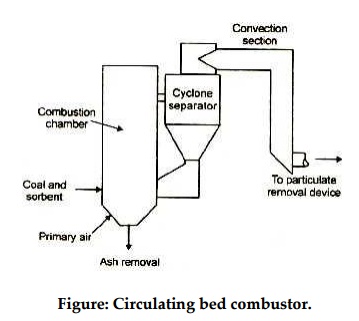Chapter: Mechanical and Electrical : Power Plant Engineering : Coal Based Thermal Power Plants
Principles of Fluidized Bed Combustion Operation

The
working principle of
(a) Fluidized Bed Combustion
(b)Atmospheric bubbling bed combustor
(c) Circulating bed combustor
And
write the advantages of fluidized bed combustion:
Principles
of Fluidized Bed Combustion Operation:
A fluidized bed is composed of fuel (coal, coke, biomass,
etc.,) and bed material (ash, sand, and/or sorbent) contained within an
atmospheric or pressurized vessel. The bed becomes
fluidized
when air or other gas flows upward at a velocity sufficient to expand the bed.
The process is illustrated in figure. At low fluidizing velocities (0.9 to 3
m/s). relatively high solids densities are maintained in the bed and only a
small fraction of the solids are entrained from the bed. A fluidized bed that
is operated in this velocity range is refered to as a bubbling fluidized bed
(BFB). A schematic of a typical BFB combustor is illustrated in figure.

Figure:
Basic fluid bed Systems

ller
particles are entrained in the gas stream and ell-defined for a BFB combustor
becomes more . A fluidized bed that is operated at velocities in fluidized bed,
or CFB. A schematic of a typical

Figure: Circulating bed combustor.
Advantages
of fluidized bed combustion
The advantages of FBC in comparison to conventional
pulverized coal-fueled units can be summarized as follows:
1.
SO2
can be removed in the combustion process by adding limestone to the fluidized
bed, eliminating the need for an external desulfurization process.
2.
Fluidized
bed boilers are inherently fuel flexible and, with proper design provision, can
burn a variety of fuels.
3.
Combustion
FBC units takes place at temperatures below the ash fusion temperature of most
fuels. Consequently, tendencies for slagging and fouling are reduced with FBC.
4.
Because
of the reduced combustion temperature, NOx emissions are inherently low.
Related Topics